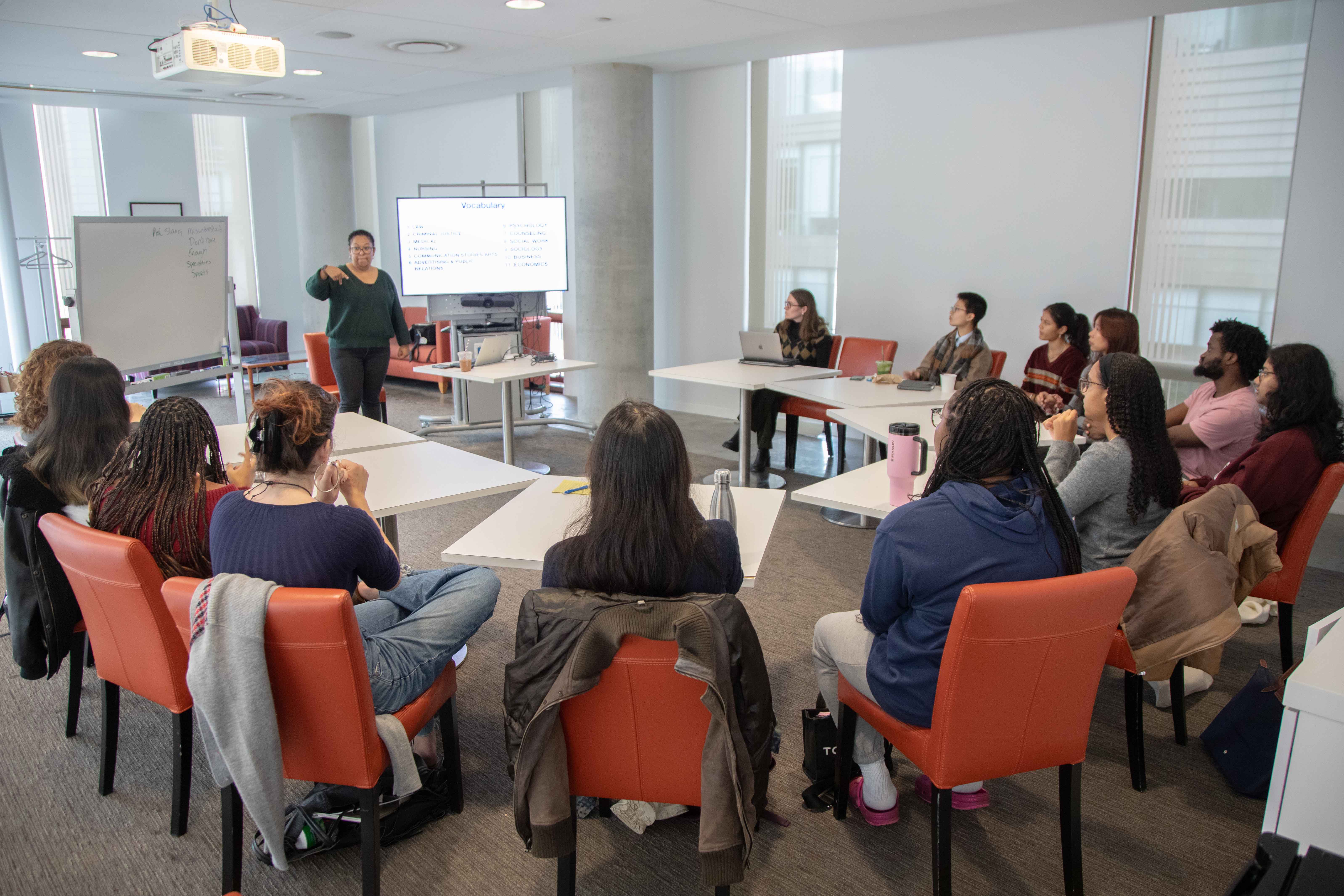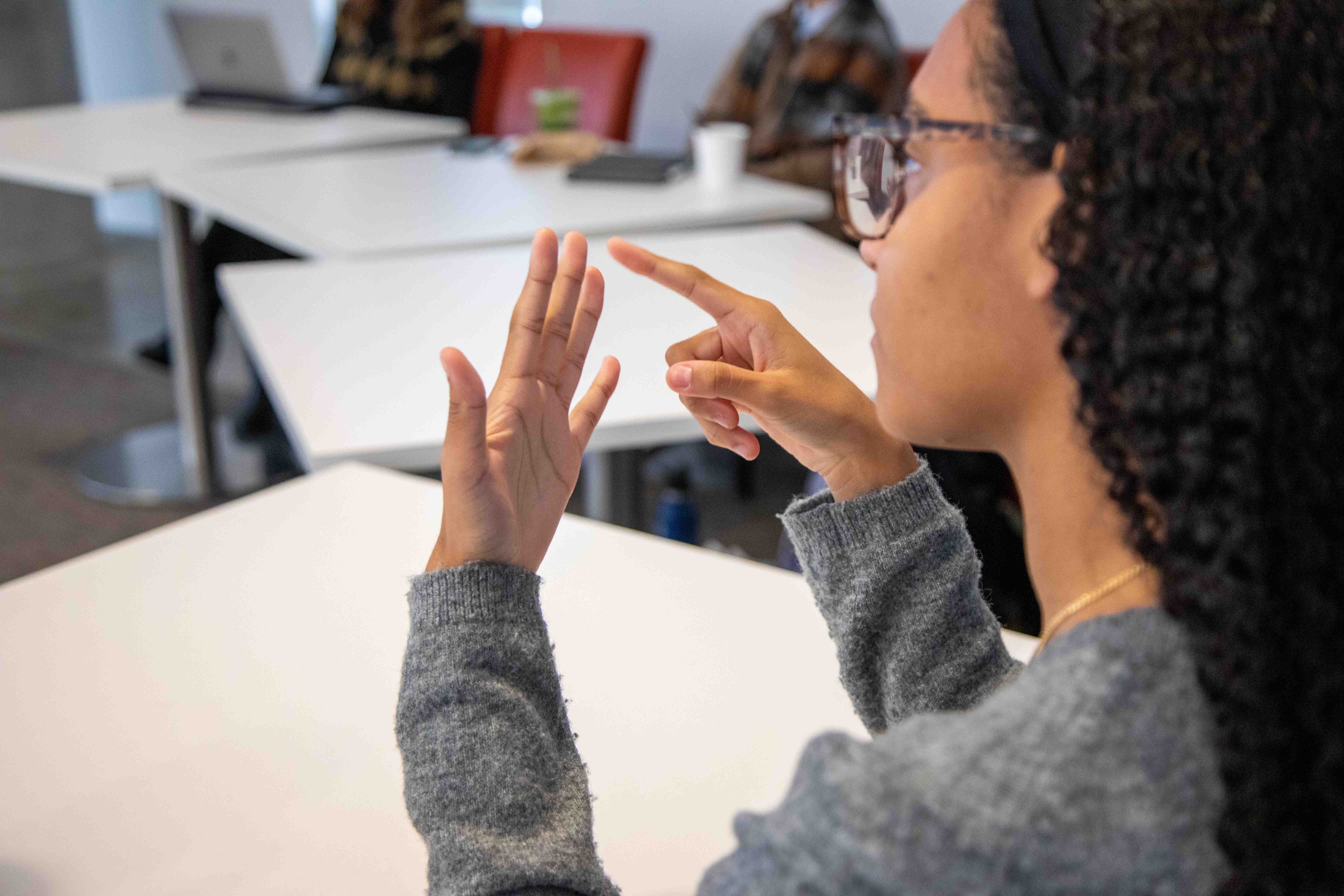This fall, Barnard re-centered the first-year academic experience to strengthen community and expand academic opportunities. One component of this effort is the introduction of four new languages: American Sign Language (ASL), Chinese, Korean, and Italian, as part of a New Languages Initiative at Barnard.
The initiative responds, first of all, to students’ desire for a more globally representative menu of basic language offerings. “Chinese, Italian, Korean, and ASL are the languages where we saw the most intense demand for elementary and intermediate courses, so our efforts this year are focused on incorporating these into our current language curriculum,” explains Laurie Postlewate, coordinator of the initiative and senior lecturer in French.
One key component of Barnard’s curriculum, known as Foundations, is the language requirement: students must complete two courses in a world language other than English. This not only strengthens students’ communication skills but also immerses them in new perspectives, cultures, and histories. While the College has been offering instruction in French, German, and Spanish for many years, the introduction of ASL, Chinese, Korean, and Italian further expands students' opportunities to broaden their educational experience and connect with cultures outside of their own.
The addition of ASL as a language course is particularly noteworthy, and the first of its kind at both Barnard and Columbia. Since 2018, students could receive transfer credit for the language, but now the experience of learning ASL can take place within the Barnard community. This year, students can take Elementary ASL I and II with the potential of more advanced courses in the near future. “The demand was very strong for elementary ASL. Moving forward, we anticipate having different levels to make it possible for students to continue their study of the language and the culture,” said Postlewate.
In her first semester teaching at Barnard, Professor Kailyn Aaron-Lozano engages students from a range of class years and disciplines. While sharing common communicative goals of all language classrooms, ASL takes place in a three-dimensional space, encouraging learners to adopt a new mode of thinking.

Students work to develop a visual mindset, learning to communicate through movement and expression. Mastery of fingerspelling and common signs introduces them to “awkward land” — a phrase coined by Aaron-Lozano demonstrating the humor and play that comes with learning a new language. “That’s when I know they’re on the right track: they’re experimenting, laughing, and thinking in ASL,” she said. With the classroom arranged in a U-shape for visibility, Professor Aaron-Lozano signs at the front and students repeat the motions, familiarizing themselves with essential vocabulary and grammar. The students’ palpable passion and energy in the classroom is evidence of their engagement as they learn this visual language.
 Through ASL, students gain a different perspective on communication and a way to act with creativity, empathy, and inclusivity. “Barnard is at the forefront of something that’s really important — our awareness of accessibility, diversity, and what we perceive as a language,” said Postlewate. “By offering ASL, we recognize the Deaf community as having a language and a culture unto itself. For this reason, ASL holds a place in the liberal arts landscape and we are proud that it is now part of the Barnard curriculum."
Through ASL, students gain a different perspective on communication and a way to act with creativity, empathy, and inclusivity. “Barnard is at the forefront of something that’s really important — our awareness of accessibility, diversity, and what we perceive as a language,” said Postlewate. “By offering ASL, we recognize the Deaf community as having a language and a culture unto itself. For this reason, ASL holds a place in the liberal arts landscape and we are proud that it is now part of the Barnard curriculum."
 "It’s critical because signing is a human right,” said Aaron-Lozano. “Language is what connects all of us and builds community. Having knowledge of ASL helps ensure that people don’t feel disconnected from their own humanity or from others.”
"It’s critical because signing is a human right,” said Aaron-Lozano. “Language is what connects all of us and builds community. Having knowledge of ASL helps ensure that people don’t feel disconnected from their own humanity or from others.”
The new language offerings exemplify Barnard’s rigorous liberal arts education. Through the Foundations curriculum, students gain academic breadth across disciplines, including world languages, while building lasting connections with Barnard faculty that will serve them through their college years and beyond.